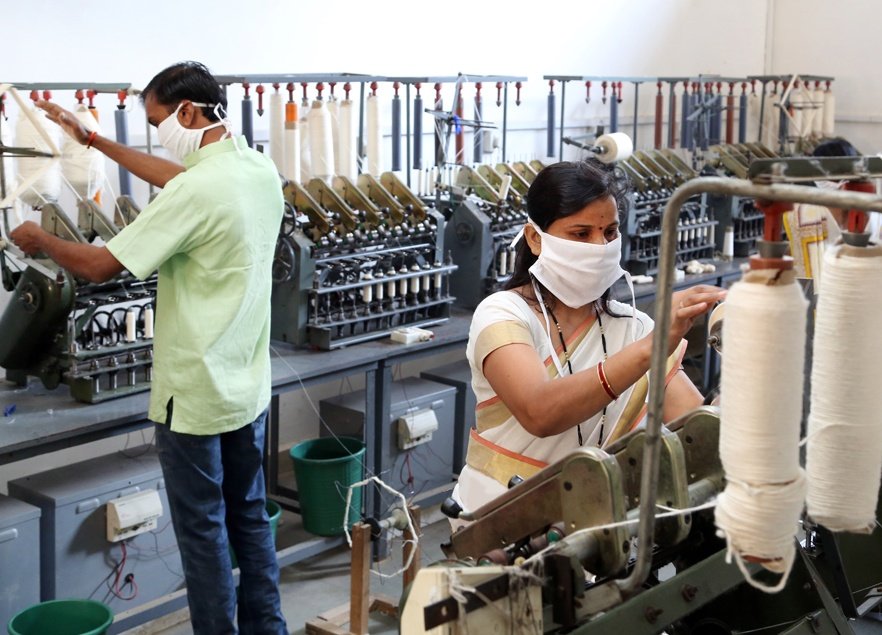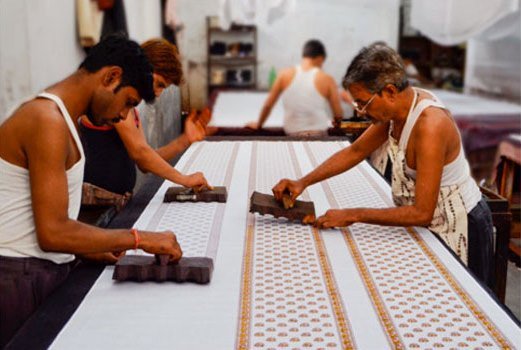8 stages from farm to fabric
Khadi Manufacturing at Sewagram Khadi
All our fabrics are 100% pure cotton that is Hand-spun, Hand-Woven, Hand-Dyed & Hand-Printed which is termed as “Khadi” (pronounced Khādī). Khadi was launched in 1920 as a peaceful weapon in the freedom movement of India by Mahatma Gandhi.
At Sewagram Khadi, we still draw inspiration from this great man who was the chief creator, chief promoter and chief marketer of this great freedom fabric.
At Sewagram Khadi, we start with picking only the best pure Khadi from states of West Bengal, Bihar, Gujarat, Maharashtra & Andhra Pradesh in India.
The entire process of Khadi Manufacturing uses less electricity and is 100% very Eco-Friendly.

Stage 1: Raw Cotton
Raw cotton from the farm is collected at one place and bought at the place of manufacturing.

Stage 2: Ginning / Cleaning
From the field, seed cotton moves to nearby gins for separation of lint and seed. The cotton first goes through dryers to reduce moisture content and then through cleaning equipment to remove foreign matter

Stage3: Carding / Slivers
Carding is a mechanical process that disentangles, cleans and intermixes fibres to produce a continuous web or sliver suitable for subsequent processing. This is achieved by passing the fibers between differentially moving surfaces covered with card clothing.

Stage 4: Spinning / Reeling
Cotton-spinning machinery refers to machines whichprocess (or spin) prepared cotton roving into workable yarnor thread.

Stage 5: Warping
Muslin Khadi warping process for weaving fabric before need warping to ready weaving.

Stage 6: Weaving
The yarns from the bobbins are taken for the warping process and placed on the looms. By the knotting process the loaded warp beams are loaded on to the looms

Stage 7: Dyeing
Dyeing is the process of adding color to textile products like fibers, yarns, and fabrics. Dyeing is normally done in a special solution containing dyes or natural colors.

Stage 8: Printing
Khadi printing is usually carried out on a dyed fabric with a paste containing a white opaque pigment like Ti02, thus producing a white effect on a coloured ground. By adding a colour pigment, a coloured khadi effect can be obtained.



